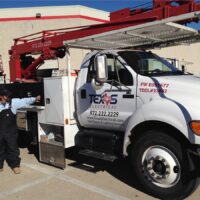Heavy equipment operators should halt operations and seek shelter when lightning threatens. Ensuring operator safety requires proactive measures before storms hit.
The operation of heavy equipment during thunderstorms presents serious safety hazards. Lightning strikes can cause fatal electrocution and significant damage to machinery. Heavy equipment, often made of metal and operating in open spaces, can attract lightning, putting operators at heightened risk.
Safety protocols necessitate immediate action at the first sign of inclement weather. Businesses involved in construction, mining, agriculture, or any field utilizing heavy machinery must establish and enforce strict lightning safety measures. These precautions are not just a matter of compliance, but crucial steps in protecting human lives and preventing machinery damage, which could lead to costly downtime and repairs. Implementing comprehensive lightning safety practices is essential for any operation dealing with heavy equipment.

Credit: ehs.princeton.edu
The Menace Of Lightning On Construction Sites
Lightning strikes pose a unique and potent threat to construction sites. These bolts from the blue can damage heavy machinery, endanger workers, and even halt construction progress. The open nature of these sites often leaves them vulnerable to the whims of the weather, turning them into potential hotspots for lightning-related accidents and damage.
Assessing The Risk To Heavy Equipment
Assessing the risk lightning poses to heavy equipment is critical. Conductors and metallic structures attract lightning, making many pieces of machinery potential targets. GPS systems and other electronic components in heavy equipment are particularly sensitive to electrical surges caused by lightning. Ensuring proper grounding and surge protection is a fundamental step in safeguarding these valuable assets.
Statistics: Lightning Incidents In The Construction Industry
Lightning incidents in construction are more common than one might think. In recent years, data reveals the striking impact of lightning strikes on the industry:
| Year | Reported Incidents | Equipment Damage | Injuries |
|---|---|---|---|
| 2020 | 125 | 75 | 30 |
| 2021 | 150 | 80 | 35 |
This data underscores the importance of lightning safety protocols on construction sites. Proactive measures save lives and valuable equipment.
Principles Of Lightning And Its Impact On Machinery
Picture a stormy sky. Energetic bolts of lightning splinter the darkness. These mighty forces of nature are not just awe-inspiring. They pose real threats, especially to heavy machinery. Lightning strikes deliver immense electrical energy. This can damage equipment. Understanding lightning and its impacts is crucial. It ensures the safety and longevity of powerful machines.
How Lightning Strikes Affect Heavy Machinery
Lightning strikes can cripple powerful engines and sensitive machine controls. When a strike makes contact, electrical systems behave unpredictably. Operators must stay informed. Here’s what happens:
- Electrical Surge: A sudden spike in voltage that can fry circuits.
- Physical Damage: Punctures or burns where the bolt hits.
- Operational Failure: Machines may stall or fail to start.
The Science Of Electromagnetic Pulses On Electronics
Lightning unleashes electromagnetic pulses (EMP). EMP can disrupt or damage electronic components. Here’s the science:
| Aspect | Impact on Electronics |
|---|---|
| EMP Intensity | Higher intensity leads to more severe damage. |
| Induction | EMP induces currents in wires, potentially overloading circuits. |
| Frequency | Different frequencies affect various components. |
To summarize, lightning is a force that demands respect. Heavy machinery operators need to understand these principles. They must take proper safeguards. Doing so protects valuable equipment from lightning’s unpredictable fury.
Case Studies: When Lightning Strikes Construction Equipment
Welcome to our eye-opening segment: ‘Case Studies: When Lightning Strikes Construction Equipment’.
We delve into alarming tales where lightning showed no mercy to the mighty machines that shape our world. These real-life incidents offer wisdom for future safety measures.
Lessons Learned From Past Lightning Accidents
Exploring the aftermaths of lightning’s wrath on heavy machinery reveals invaluable insights. Let’s dissect some documented cases to enhance our preparedness:
- Operator Safety: Impeccable timing in halting operations and seeking shelter can save lives.
- Line of Defense: Installing lightning rods on equipment can avert direct hits.
- Unpredictable Downtime: Recognizing the ripple effect on project timelines underscores the need for contingency plans.
Analysis Of Direct And Indirect Strike Damages
Lightning impacts equipment in two principal ways:
| Type of Strike | Direct Effects | Indirect Effects |
|---|---|---|
| Direct Strike | Resulting in burnt electronics, melted metals, and sometimes complete destruction. | Induces voltage spikes in nearby electrical systems leading to circuit damage. |
| Indirect Strike | May not be visible but causes latent failures in complex machinery systems. | Creates strong electromagnetic fields causing disruption in control systems. |
Delineating between direct hit calamities and secondary surge aftermath helps target protective measures accurately.

Credit: abumaizar.com
Proactive Protective Measures For Heavy Equipment
Heavy equipment operates under tough conditions, and lightning poses a severe risk, not only to the equipment but also to the safety of operators. Proactive protective measures are essential to ensure that both machines and personnel remain unharmed during electrical storms. Incorporating these measures can prevent downtime and costly repairs. Let’s delve into the specifics, outlining the best practices for lightning safety.
Grounding Systems For Static Discharge
Grounding systems act as a safe pathway for electrical currents, minimizing the risk of lightning-related damage. To protect heavy equipment, sophisticated grounding techniques should be in place. This includes:
- Installation of metal rods driven deep into the earth.
- Using heavy gauge grounding wires connected to the equipment.
- Regular inspection and maintenance of grounding components.
Surge Protection And Voltage Regulation
Lightning strikes can cause surges capable of frying circuits and damaging equipment. It is crucial to implement measures such as:
- Surge protectors to deflect excess voltage away from sensitive components.
- Voltage regulators that maintain consistent power levels during fluctuations.
Investing in quality surge protection can save on costly repairs and extend the longevity of heavy equipment.
Emerging Technologies In Lightning Protection
When giants roam the earth, safe from the stormy wrath of the skies, it is technology that stands as their shield. Emerging technologies in lightning protection are revolutionizing the way we safeguard heavy equipment used in construction, mining, and agriculture. These innovations provide real-time solutions, ensuring that these metal behemoths and the brave souls operating them remain secure even when lightning threatens.
Innovations In Lightning Detection And Warning Systems
Staying a step ahead of nature’s electrical showcase is critical for heavy equipment safety. Advanced lightning detection and warning systems are vital in this quest:
- Real-time alerts: Modern systems provide instant notifications about nearby lightning activity.
- GPS Tracking: Accurate location data guides operators to safety.
- Networked sensors: A web of sensors creates a safety net across large areas.
These systems not only detect strikes but also predict conditions conducive to lightning, giving a much-needed heads-up before danger manifests.
Advancements In Material Science For Enhanced Safety
Material science plays a major role in protective measures. New materials and construction techniques are elevating safety standards:
| Material | Property | Benefit |
|---|---|---|
| Conductive composites | Less weight | Easy application on equipment |
| Advanced polymers | Corrosion resistance | Enhanced lifespan |
| Nano-coatings | Electrical dissipation | Reduced lighting attraction |
Such advancements not only protect equipment but also reduce downtime and maintenance costs, securing operational continuity even in the face of lightning risk.
Operational Protocols During Lightning Threats
Workers in heavy equipment fields must stay safe when lightning threatens. Understanding what to do is vital. Proper protocols can save lives. Let’s dive into the best practices for operating during lightning threats.
Developing And Implementing Safety Plans
Every site needs a lightning safety plan. This plan should outline steps to take once a lightning threat exists. Key elements include:
- Detection: Tools to identify nearby lightning strikes.
- Shelter: Safe locations for workers.
- Equipment: Procedures for securing heavy machinery.
The plan must be clear. Workers should know their roles. Drills ensure readiness. The aim is to avoid injuries and equipment damage.
Signage can help. It should be visible. It will remind workers of the protocol. All plans must meet local safety regulations.
Training Workers For Lightning Event Procedures
Training is key in lightning preparedness. This training covers:
- Recognizing lightning risks.
- Following evacuation procedures.
- Ensuring personal safety.
Mock drills reinforce training. Workers learn to react quickly. This reduces confusion. Workers should practice regularly. Refresher courses keep knowledge current.
Videos and manuals support learning. They provide visual and written instructions. Workers can refer to them as needed. Quizzes test understanding.
Engineering Resilience: Building Lightning-safe Equipment
Lightning strikes pose a significant threat to heavy equipment. To protect these valuable assets, engineers must design resilient systems. Building lightning-safe equipment means thoughtfully crafting each component to withstand electrical surges. Read on to learn how experts achieve this goal.
Design Considerations For Lightning Resistance
Lightning resistance starts with smart design. Key elements include:
- Material selection: Use conductive materials to direct lightning safely.
- Grounding systems: Grounding diverts strikes away from sensitive parts.
- Shielding: Protects electronics from indirect surge effects.
| Component | Role in Lightning Safety |
|---|---|
| Conductors | Channel lightning to the ground |
| Insulators | Keep electricity from spreading |
| Surge protectors | Prevent power spikes in circuits |
Achieving Equipment Continuity And Robustness
For equipment to last, it must be continuous and robust. Strategies include:
- Redundant pathways: Extra paths for electricity flow ensure functionality.
- Routine checks: Inspections identify areas for improvement.
- Surge tolerance design: Equip parts to handle unexpected power surges.
Resilient equipment handles tough conditions. They last longer and save money.
Insurance And Liability Concerns With Lightning Damage
Heavy equipment operates under tough conditions, including extreme weather like lightning storms. Understanding insurance and liability concerns for lightning damage is crucial for businesses relying on such equipment. These concerns can affect your bottom line significantly. It’s important to have clear protocols for managing and mitigating these risks.
Navigating Insurance Claims Post-lightning Damage
After a lightning strike disrupts your operation, swift action is essential. Start with reviewing your insurance policy details. Policies may cover direct lightning strikes or their electrical aftermath. Look for sections on heavy equipment and closely follow the claim filing guidelines.
- Document everything. Take photos, record damages, and jot down the timeline of events.
- Contact your insurer promptly. Delays can affect claim processing.
- Understand your deductible and how it applies to the damage.
- Enquire about temporary equipment replacement options if available.
Keep all communication with the insurance company written and saved. If disputes arise, these documents are your evidence. Proactive communication helps expedite claim settlements.
Understanding Liability In Lightning-induced Incidents
Liability for lightning damage can be complex. Owners must prove they took reasonable precautions to protect their equipment. If negligence is found, owners may be liable for damages. This extends beyond the equipment to include workplace safety and business interruption.
- Review safety protocols. Ensure up-to-date practices for storm events.
- Assess risks for equipment used in exposed locations.
- Update training sessions for employees on emergency procedures.
Demonstrate due diligence with regular maintenance records and safety audits. These actions show a commitment to safety, possibly mitigating liability in case of incidents.
Future Trends In Heavy Equipment And Lightning Safety
As technological advancements surge forward, the area of heavy equipment and lightning safety is ripe for innovation. With an ever-increasing need to protect valuable assets and ensure the safety of operators, the industry looks toward the horizon for cutting-edge solutions. The following sections highlight key future trends poised to transform the landscape of heavy equipment operation during electrical storms.
Predictive Models And Weather Tracking Integration
The incorporation of predictive models and weather tracking systems into heavy equipment operations stands as a significant trend. These analytics tools offer real-time data, enabling machines and operators to respond swiftly to the threat of lightning. Expect to see a rise in sophisticated software capable of alerting personnel of impending storms, thus enhancing proactive safety measures.
- Improved forecast accuracy
- Real-time notifications
- Enhanced response time
Potential For Automation To Minimize Lightning Risks
Automation presents a powerful tool in mitigating the risks associated with lightning strikes. Future heavy equipment could employ autonomous systems to cease operations or find safe zones without human intervention. This leap forward not only boosts safety but also reduces downtime resulting from adverse weather conditions.
- Autonomous safety protocols
- Equipment self-preservation
- Reduction in operator exposure
Frequently Asked Questions For Heavy Equipment Lightning Safety
What Is Heavy Equipment Lightning Safety?
Heavy equipment lightning safety involves protocols to protect machinery and operators from the dangers of lightning strikes. This includes ensuring safe operational practices, proper grounding of equipment, and seeking shelter during storms.
How Does Lightning Impact Heavy Machinery?
Lightning can severely damage heavy machinery, causing electrical failures, fires, or even direct hits that can lead to costly repairs and downtime. Personnel safety is also a significant concern during such events.
Can Lightning Strike Heavy Equipment Operators?
Yes, lightning can strike heavy equipment operators if the equipment is not properly grounded and they are exposed during a storm. It’s crucial for operators to follow safety guidelines and seek shelter when lightning is near.
What Safety Measures Should Be Taken For Heavy Equipment?
Safety measures include grounding the equipment, halting operations during storms, maintaining a safe distance from tall structures, and training personnel on lightning safety protocols to minimize risks.
Conclusion
Wrapping up, safeguarding heavy equipment from lightning is crucial. We’ve explored effective strategies to protect assets and personnel. Regular training, proper grounding methods, and monitoring systems are your best defense. Stay informed, be prepared, and mitigate risks to weather any storm.
Safety is paramount; never underestimate Mother Nature’s power.




